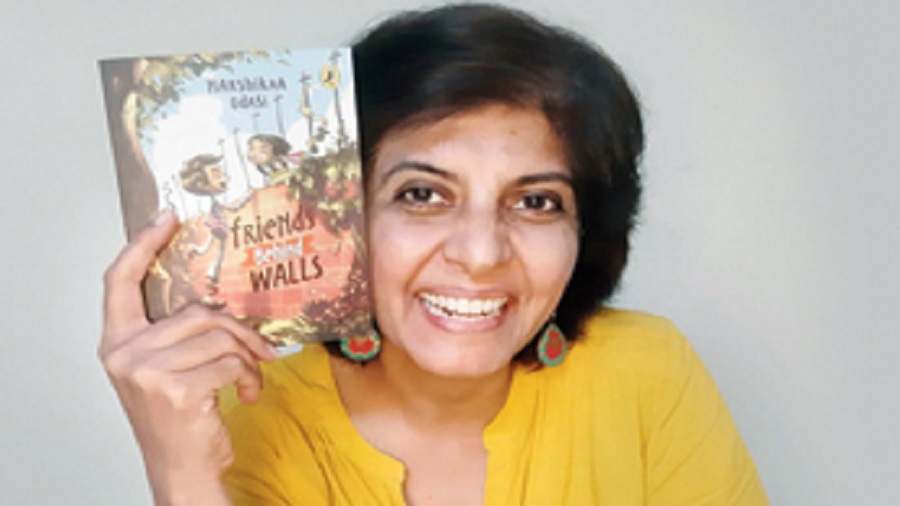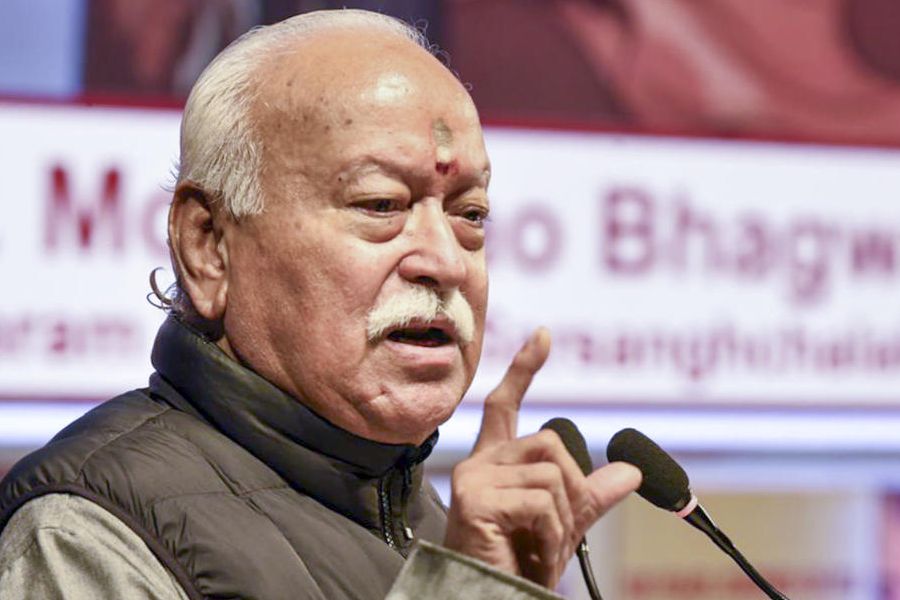Formerly a journalist, Harshikaa Udasi’s first book for children, Kittu’s Very Mad Day, won the FICCI Publishing Awards 2017 for the Best Children’s Book. Her latest venture Friends Behind Walls (Puffin; Rs 199) delves into that corner of our family experience that feels universal somehow. Her protagonists Inu and Putti want to be friends but can’t because of an age-old feud between the two neighbours, who happen to be their parents. How children perceive the world and their priority list is beautifully explained in this book for kids, which is also peppered with dollops of humour.
Udasi has also been managing a book club for kids aged three to 14 years for the past seven years, where kids come together for a book reading and reviewing sessions from a very young age. “I try to get the children opinionated and air their views. Reading of course remains the most important part of the exercise,” said Udasi of her sessions which never cross batches of four-five students. The Telegraph spoke to her about her experience of writing for children and how the idea of ‘friends behind walls’ was born. Excerpts.
What prompted the decision of writing for children?
It had always been a long-standing dream, to be honest! However, it took a while and my first book came out when I was 40. Duckbill Books had been running an online contest that requested submissions and I realised that the journalist in me couldn’t work without a deadline so I decided to participate and write my first book. It was centred around the theme of disability and the idea was to focus on bringing differently abled children as protagonists, without being unidimensional. That is how Kittu’s Very Mad Day was born. Since then I have contributed extensively to anthologies and short story collections.
How difficult or imperative is it to weave in a social message into books for children?
Not in every book can you push a social message but they can be incorporated into every layer. I can think of this book called When Jiya Met Urmila by Shabnam Minwalla who has so beautifully upheld class distinctions that prevail unnecessarily in society without explicitly saying so, as her protagonists join hands for a common mission of an unruly bully of a neighbour. For children, it’s really a story but her writing is so sensitive that it will resonate. That’s the beauty of a children’s book. You can’t dumb down the content and neither can you bore them into yawning.
I may not have to say anything if I write that ‘the boy was given three puris and the girl was given one’. Kids are so perceptive that they are bound to ask why and that starts a conversation immediately as to what is right and wrong. They understand what is happening.
Tell us about the inception of Friends Behind Walls.
The book is based in Deolali and I have always been a Bombay person. One tends to draw heavily from their personal accounts and that is exactly what happened with me. I have experienced my family, during my childhood, hold grudges with neighbours. I was in Deolali when I chanced upon the kids interacting with each other through a hole in the wall. I found it so cute and wished that my brother and I had similar ways of communicating with our friends when we were kids. That is how Friends Behind Walls was born. And of course, there was a rich tapestry of characters to draw inspiration from and my characters started coming alive slowly. Om Namaha, the vet in the colony, are all characters from Deolali!
What next for children?
I am working on an anthology which is honestly my dream project! Being a Sindhi I have seen myself and my child lose touch with the language over time. I feel that after Partition, Sindhis got so busy building up their lives from scratch that they forgot to take care of the language. So we decided to collect regional tales in different languages from various parts of the country, translate them to English and publish them together as an anthology. Maithili, Konkani, Assamese stories are finding their way to this anthology and I am really excited.











